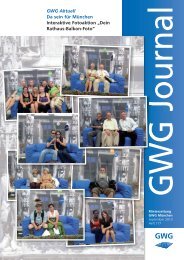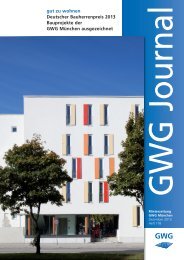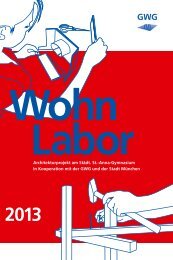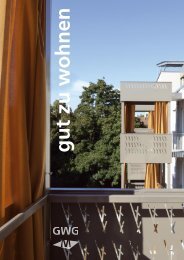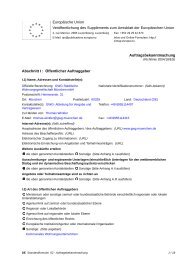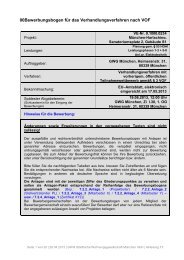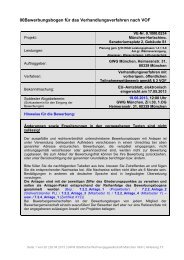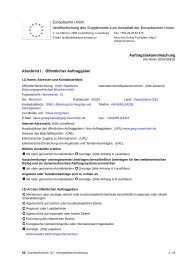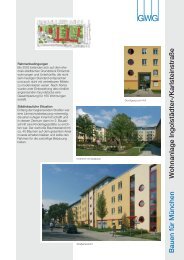New build - GWG München
New build - GWG München
New build - GWG München
Create successful ePaper yourself
Turn your PDF publications into a flip-book with our unique Google optimized e-Paper software.
situation that continued into the nineteenth<br />
century. These so-called hostels,<br />
with their own entrance steps, occasionally<br />
consisted of an entire storey, but<br />
could also only comprise a single room.<br />
In 1911, Rosa Kempf described the poor<br />
housing in her study “The Life of the<br />
Young Factory Girl in Munich” as “low,<br />
stifling, cramped and damp and full of<br />
people.” The sociologist painted a harrowing<br />
picture of life among the lower<br />
classes. One family had 19 children, the<br />
father had consumption, the children<br />
were anaemic and the wife was completely<br />
exhausted and sapped of en-<br />
Top: Zeppelinstrasse (1905)<br />
Bottom: Franz-Prüller-Strasse 11 (1905)<br />
ergy.” A modern-day visitor to the lively<br />
Auer Dult today might have a drink at<br />
the Nockherberg or enjoy a walk along<br />
the Isar, but they would be hard-pressed<br />
to imagine the conditions under which<br />
people used to live here. And yet the<br />
blunt descriptions of misery written by<br />
Karl Valentin, born in the Au in 1882 as<br />
Valentin Fey, were also regarded as scandalous.<br />
Tiny apartments and untenable hygienic<br />
conditions are long since a thing of the<br />
past. The Au is becoming a location of<br />
choice for higher wage earners, as they<br />
move in droves into the centre of the<br />
city, changing as they do the old mixture<br />
of the neighbourhood. The typical blend<br />
102<br />
From top to bottom: Franz-Prüller-Strasse<br />
(1905), Lilienstrasse (1905), Mariahilfplatz<br />
View of the inner city (1808)



